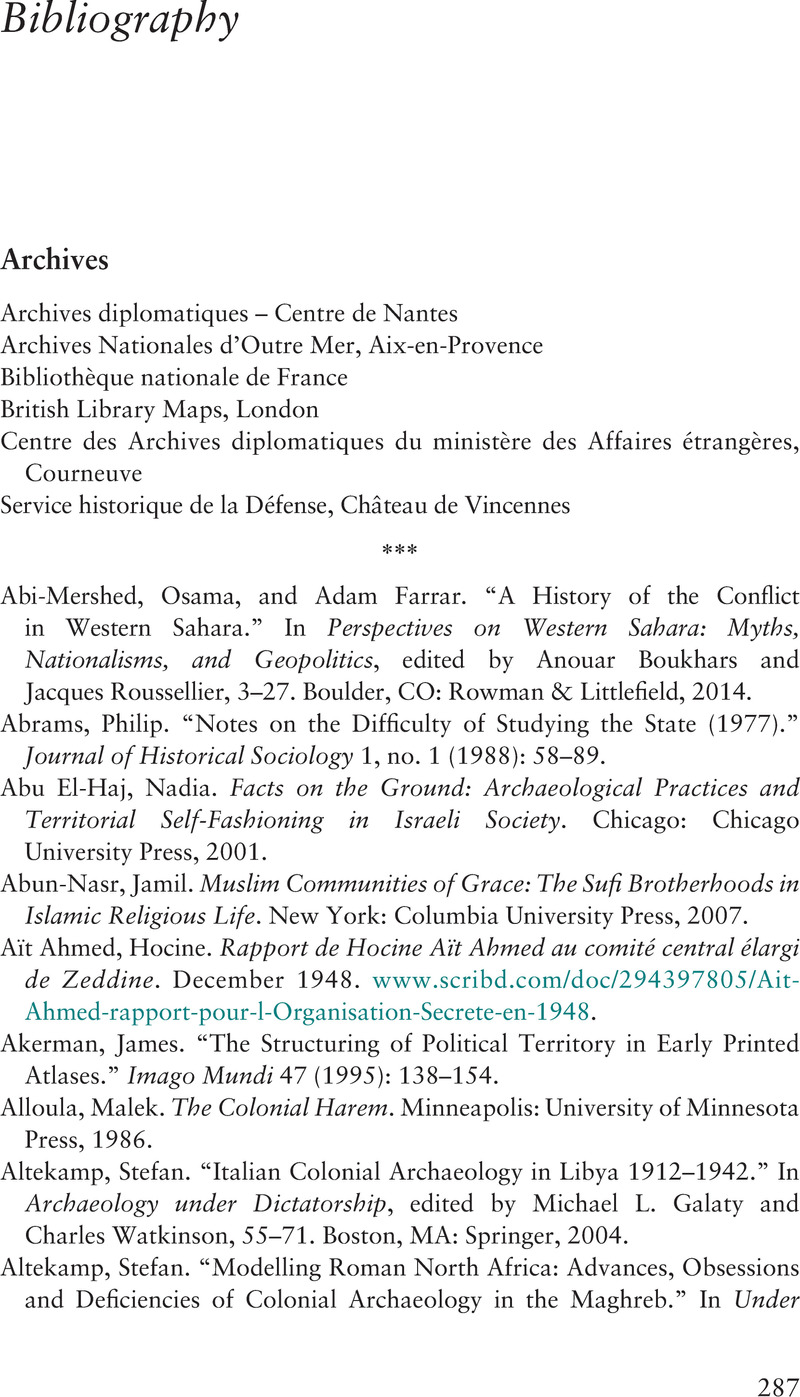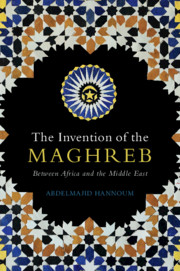Book contents
- The Invention of the Maghreb
- The Invention of the Maghreb
- Copyright page
- Dedication
- Contents
- Maps
- Tables
- Acknowledgments
- Introduction
- 1 Geographic Imagination and Cartographic Power
- 2 The Trace and Its Narratives
- 3 Language, Race, and Territory
- 4 Naming and Historical Narratives
- 5 Strategies for the Present
- 6 Cracks
- Postscript
- Bibliography
- Index
- References
Bibliography
Published online by Cambridge University Press: 13 May 2021
- The Invention of the Maghreb
- The Invention of the Maghreb
- Copyright page
- Dedication
- Contents
- Maps
- Tables
- Acknowledgments
- Introduction
- 1 Geographic Imagination and Cartographic Power
- 2 The Trace and Its Narratives
- 3 Language, Race, and Territory
- 4 Naming and Historical Narratives
- 5 Strategies for the Present
- 6 Cracks
- Postscript
- Bibliography
- Index
- References
Summary

- Type
- Chapter
- Information
- The Invention of the MaghrebBetween Africa and the Middle East, pp. 287 - 311Publisher: Cambridge University PressPrint publication year: 2021
References
Bibliography
***



